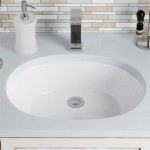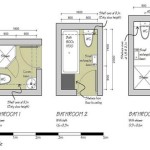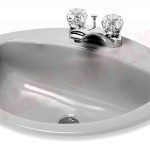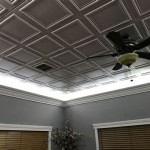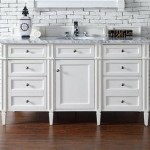What Is The Standard Bathroom Vanity Depth?
The bathroom vanity is a crucial element in bathroom design, serving both functional and aesthetic purposes. It provides storage for toiletries, towels, and other bathroom essentials, while also contributing to the overall style and ambiance of the space. Among the various dimensions of a vanity, the depth is a particularly important consideration. The depth of a bathroom vanity significantly impacts its usability, the amount of floor space it occupies, and its compatibility with the overall bathroom layout. Understanding standard vanity depths is essential for homeowners, interior designers, and contractors alike when planning a bathroom renovation or new construction project.
This article will explore the standard depths for bathroom vanities, the factors that influence depth selection, and the implications of choosing the right or wrong size. The goal is to provide a comprehensive overview of bathroom vanity depths, enabling readers to make informed decisions when selecting a vanity that meets their specific needs and preferences.
Standard Bathroom Vanity Depths
The term "standard" in bathroom vanity dimensions refers to the most commonly manufactured and widely available sizes. While custom-built vanities can be made to nearly any specification, understanding the industry standards provides a baseline for planning and budgeting. The most common depth for a bathroom vanity is typically considered to be between 20 and 21 inches. This depth provides an adequate surface area for the sink and faucet, as well as sufficient storage space underneath. However, variations exist to accommodate different bathroom sizes and design preferences.
Here's a breakdown of the generally accepted standard bathroom vanity depths:
- 21 Inches (53.3 cm): This is arguably the most common and widely available depth. A 21-inch deep vanity offers a good balance between storage capacity and space conservation, making it suitable for a variety of bathroom sizes. It typically allows for comfortable use of the sink and faucet without requiring excessive reach.
- 18 Inches (45.7 cm): Vanities with an 18-inch depth are often found in smaller bathrooms, such as powder rooms or guest bathrooms, where space is at a premium. While offering less storage than a 21-inch vanity, an 18-inch depth can still accommodate a standard-sized sink and provide enough room for basic toiletries.
- 24 Inches (61 cm): A 24-inch deep vanity is considered a more luxurious option, offering ample countertop space and generous storage capacity. These vanities are often found in larger master bathrooms where space is not a limiting factor. They provide a significant amount of room for toiletries, towels, and other bathroom necessities.
It is important to note that these are general guidelines, and actual dimensions may vary slightly depending on the manufacturer and the specific style of the vanity. Furthermore, vanities marketed as "slimline" or "compact" may have depths smaller than 18 inches, designed for extremely restricted spaces.
In addition to the overall depth, it is also crucial to consider the overhang of the countertop relative to the vanity cabinet. Typically, the countertop will overhang the cabinet by about 1 inch in the front and slightly less on the sides. This overhang helps to protect the cabinet from water damage and provides a more aesthetically pleasing appearance. Ensure that the total depth, including the countertop overhang, is taken into account when determining the available space.
Factors Influencing Vanity Depth Selection
Choosing the appropriate bathroom vanity depth involves considering several crucial factors that encompass the bathroom’s size, layout, intended use, and aesthetic preferences. Each factor plays a significant role in determining the optimal depth for the vanity to ensure functionality and visual harmony.
Bathroom Size and Layout: The most important consideration in selecting a vanity depth is the size of the bathroom. In smaller bathrooms, space is a premium, and a shallower vanity depth, such as 18 inches, may be necessary to avoid overcrowding the room. A deeper vanity, such as 24 inches, might make a small bathroom feel cramped and difficult to navigate. The layout of the bathroom also plays a crucial role. Consider the placement of other fixtures, such as the toilet and shower, and ensure that there is adequate clearance between the vanity and these fixtures. Building codes often specify minimum distances between fixtures, which must be adhered to during the design process. Carefully measure the available space and map out the layout to determine the maximum vanity depth that can be accommodated without compromising functionality or safety.
Intended Use and Storage Needs: The intended use of the bathroom and the associated storage needs influence the necessary vanity depth. A master bathroom used daily by multiple individuals will likely require more storage space than a guest bathroom used only occasionally. A deeper vanity, such as 24 inches, provides more drawer and cabinet space for storing toiletries, towels, and other bathroom essentials. Consider the types of items that need to be stored in the vanity and the amount of space required for each. If the vanity is primarily intended for storing a few basic toiletries, a shallower depth may suffice. However, if it needs to accommodate a large collection of personal care products, cleaning supplies, and spare towels, a deeper vanity will be more appropriate. Assess the current storage situation in the bathroom and identify any specific storage challenges that the new vanity needs to address.
Style and Aesthetics: The style and aesthetics of the bathroom also play a role in determining the appropriate vanity depth. A modern, minimalist bathroom might benefit from a shallower vanity with clean lines and a streamlined profile. A traditional, more ornate bathroom might call for a deeper vanity with decorative details and a more substantial presence. Consider the overall style of the bathroom and choose a vanity depth that complements the existing design elements. The depth of the vanity can also impact the perceived proportions of the room. A shallow vanity in a large bathroom might look out of place, while a deep vanity in a small bathroom might feel overwhelming. Strive for a balance between functionality and aesthetics, ensuring that the vanity depth contributes to the overall visual harmony of the space. Pay attention to the shape and style of the sink and faucet, as these elements can also influence the perceived depth of the vanity. A large, deep sink may require a deeper vanity to provide adequate support and prevent water from splashing onto the floor.
Implications of Choosing the Wrong Vanity Depth
Selecting the inappropriate depth for a bathroom vanity can have significant implications, affecting both the functionality and aesthetics of the bathroom space. These implications can manifest in several ways, from creating navigational challenges to diminishing storage capacity and disrupting the overall design harmony. Understanding these potential drawbacks is crucial for making informed decisions.
Space Constraints and Navigation: The most immediate consequence of selecting the wrong vanity depth is the potential for creating space constraints within the bathroom. A vanity that is too deep can obstruct walkways, making it difficult to move around freely. This can be particularly problematic in smaller bathrooms where space is already limited. Obstruction can lead to a cramped and uncomfortable environment, hindering daily routines. Consider the maneuverability around the vanity – individuals need to be able to comfortably use the sink and access drawers or cabinets without bumping into other fixtures or walls. Building codes often specify minimum clearances around bathroom fixtures to ensure safety and accessibility. Failing to adhere to these codes can result in building code violations and the need for costly renovations. A too shallow vanity in a large space can also create an awkward, unbalanced aesthetic, making the room feel less cohesive.
Insufficient or Excessive Storage: Choosing the wrong vanity depth can directly impact the available storage space. A vanity that is too shallow may not provide enough room for storing toiletries, towels, and other bathroom essentials, leading to countertop clutter and a disorganized appearance. Items may need to be stored elsewhere in the bathroom, further contributing to clutter and inconvenience. Conversely, a vanity that is too deep may offer excessive storage that is not needed, wasting valuable floor space and making it difficult to access items stored in the back of cabinets or drawers. The goal is to find a balance between storage capacity and space efficiency, ensuring that the vanity provides enough room for essential items without overwhelming the bathroom. Evaluate the specific storage needs of the bathroom and choose a vanity depth that aligns with those needs. Consider the types of items to be stored, the frequency of use, and the available space for alternative storage solutions.
Aesthetic Disruption: The depth of the vanity significantly influences the overall aesthetics of the bathroom. A vanity that is disproportionately large or small relative to the size of the bathroom can disrupt the visual harmony of the space. A very deep vanity in a small bathroom can appear bulky and overpowering, while a shallow vanity in a large bathroom can look undersized and insignificant. The depth of the vanity should complement the other design elements in the bathroom, such as the tile, fixtures, and lighting. It can affect the perceived proportions of the room, potentially making it feel smaller or larger than it actually is. Consider the visual impact of the vanity on the overall design scheme. The chosen material and color of the vanity can also be inadvertently emphasized with a vanity depth that does not match. Strive for a cohesive and balanced look, ensuring that the vanity depth contributes to the overall aesthetic appeal of the bathroom. Consult with a design professional to get advice on how to choose the appropriate vanity depth for the specific style and dimensions of the bathroom.

What S The Standard Depth Of A Bathroom Vanity

What Is The Standard Height Of A Bathroom Vanity Sizes Vessel Sink Cabinets

What Is The Standard Height Of A Bathroom Vanity

What Is The Standard Bathroom Vanity Height Size Guide

What Is The Standard Height Of A Bathroom Vanity

Style Selections Davies 32 625 In Gray Single Sink Bathroom Vanity With White Cultured Marble Top Mirror Included The Vanities Tops Department At Com

Plan Your Bathroom By The Most Suitable Dimensions Guide Engineering Discoveries Vessel Sink Vanity Floor Plans Washbasin Design
Bathroom Vanity Sizes In Optimizing Space And Style For Every Wellsons

White Wood And Tempered Glass Vessel Sink Vanity Set

What Is The Standard Height Of A Bathroom Vanity Sizes Vessel Sink Cabinets


